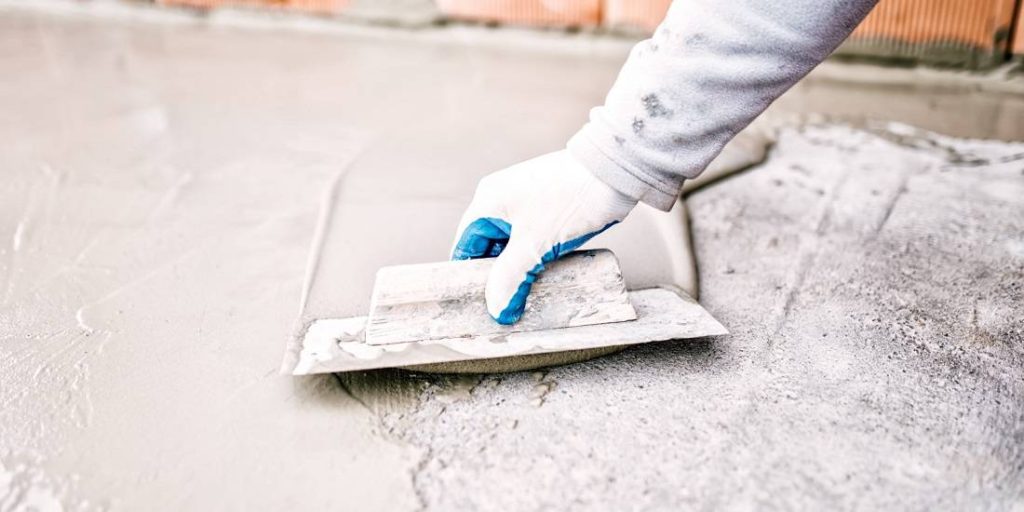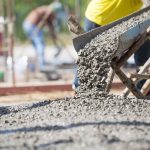For a fast developing nation like India, the future focus will be to reduce maintenance costs of structures. We will NEED to adopt a stance to prevent deterioration of structures by using the latest available material technology. Taking into consideration today’s general concrete manufacturing and placing process, it becomes imperative to waterproof the concrete as insurance against its deterioration. If manipulating the properties of concrete itself can prevent water ingress through the concrete, the longevity of the structure can be maintained. This method will ensure that the concrete is protected against water and aggressive media and the structure is protected from failure through its design life. Quite simply this can be achieved by blocking the pores and capillaries in concrete using one of the following methods:
- Using high performance PCE polymers to reduce water cement ratio of concrete
- Use of materials like Silica-fume or Aluminosilicate slurries in concrete
- Use of highly specialized latest generation Integral waterproofing compounds that work on process of Dynamic SynCrystallization® (DySC) technology
Using PCE Polymers to improve watertightness
 |
| Figure 7: Structure and Functioning of PCE Polymer Molecules |
Using PCE polymers, give excellent water reduction as compared to normal plasticizers. This helps to reduce the w/c ratios and cement contents, even in normal concretes. Lower the w/c ratio, lower are the number of capillaries in concrete. It is also a well documented fact that PCE based admixtures do not have the side effects of retardation often seen with normal retarding superplasticizers. This is beneficial as workability time of concrete can be controlled but the hydration and setting of concrete will proceed unhindered. This ensures that any subsequent vibration to concrete after initial set will not open up capillaries, as is the case if concrete is retarded for a very long period of time, thereby rendering concrete relatively waterproof. Figure 7 shows the structure and functioning of the latest PCE Polymer molecules.
Use of Condensed Silica Fume or Aluminosilicates to improve watertightness
Again it is well-known that Condensed Silica Fume or Aluminosilicates are extremely fine materials that function both as micro-fillers as well as pozzolanic materials that hydrate in the presence of the Calcium Hydroxide in Concrete. The combined effect of these materials, as micro-fillers and hydrating materials, close capillaries in concrete, thereby rendering it waterproof.
Using Integral Waterproofing Compounds working by Dynamic SynCrystallization
Keeping today’s constructional practices and economy in mind it may be difficult to incorporate the use of PCE plasticizers, Silica Fume or Aluminosilicates in concrete. In this case, the best alternative would be to use the latest generation, highly specialized Integral waterproofing compounds working on the principle of Dynamic SynCrystallization® (DySC) and Hydrophobic Pore Blocking. The ease-of-use and relative economy of such a material makes it ideal for use even in concretes up to 60 MPa in strength. Therefore, even normal concretes can be converted into high performance waterproof concretes.
Use of special latent hydraulic and pozzolanic Nanoparticles in special integral waterproofing additives cause the cement matrix to be densified by a complex process called Dynamic SynCrystallization (DySC®). The strength of any cement-based material is based on the hydration of clinker. The C-S-H gel so formed alongwith interlocked hydration crystals form the dense cement matrix. In the presence of water, the Nanoparticles in the capillary pores now act as additional crystallization seeds that lead to new C-S-H gels and crystal formation thus continuing mineralization of the cavity structure. Over time the structure of the matrix is thus becoming more refined, overall porosity decreases, micro-cracks are sealed and pore size distribution is optimized. This DySC® mechanism reduces pore content of the concrete making it water tight.
 |
| Figure 8: Mechanism of DySC® and Hydrophobic pore Blocking |
In addition to the DySC mechanism, special additives in the integral waterproofing compounds cause a contraction of capillaries and also convert the water-absorbing capillary forces into water repellant capillary forces due to the hydrophobic effect. It is specially formulated and designed to prevent the passage of water through pores and capillaries of the concrete, making the concrete watertight. Figure 8 shows the combination of processes rendering the concrete watertight. Table 3 shows a comparison of performance of Dynamic SynCrystalliztion based Product versus no protection.
| Table 3: Comparative Results of Concrete With and Without DySC based Additives | ||
| Test Result | Control Mix | MC-Special DM Mix |
| Water Absorption at 7D, % | 1.3 | 0.9 |
| Water Absorption at 28D, % | 1.3 | 0.7 |
| Compressive Strength 7D, N/mm2 | 66 | 67.5 |
| Compressive Strength 28D, N/mm2 | 75.5 | 76 |
| Water Penetration @ 1kgf/cm2, cm | 10.1 | 4 |
| Water Penetration @ 3kgf/cm2, cm | 14.1 | 9.1 |
| Water Penetration @ 5kgf/cm2, cm | 19.4 | 11.8 |
| Initial Drying Shrinkage, % | 0.026 | 0.030 |
| Wetting Expansion, % | 0.016 | 0.005 |
Conclusion
The latest applications of concrete will necessitate the use of High Performance Concrete incorporating new generation materials such as PCE based admixtures, Microsilica, New Generation Aluminosilicates, and the latest Generation Integral Waterproofing Admixtures. New generation PCEs can answer the call of stringent requirement of high workability, self-compaction and long hauling times. The New Generation Superplasticizer cannot be equated with High Range Water Reducing Agents combined with Retarders, as the latter would not give the desired high early strength. The new generation superplasticizers would have to be of the type that would give very low loss of slump over a period of time without delaying the hydration process. Using a combination of these materials a new generation of concretes can be made which improve the durability of structures for maximum benefit.
Presently, the cost of raw materials of New Generation Superplasticizers as well as of new generation materials like Microsilica/Aluminosilicates is relatively higher and therefore blending of raw materials can be resorted to. But rather than initial cost, lifecycle cost and a cost to benefit ratio should be considered. These new materials bring forward a new frontier in construction, which can make construction much faster, durable and cheaper in the long run and this should be recognized. Till date, the usage of these new generation materials is not substantial in India, but soon the technology and commonplace use of HPC, will pick up considering the speed at which infrastructure projects are being launched in the country.



Comments are closed